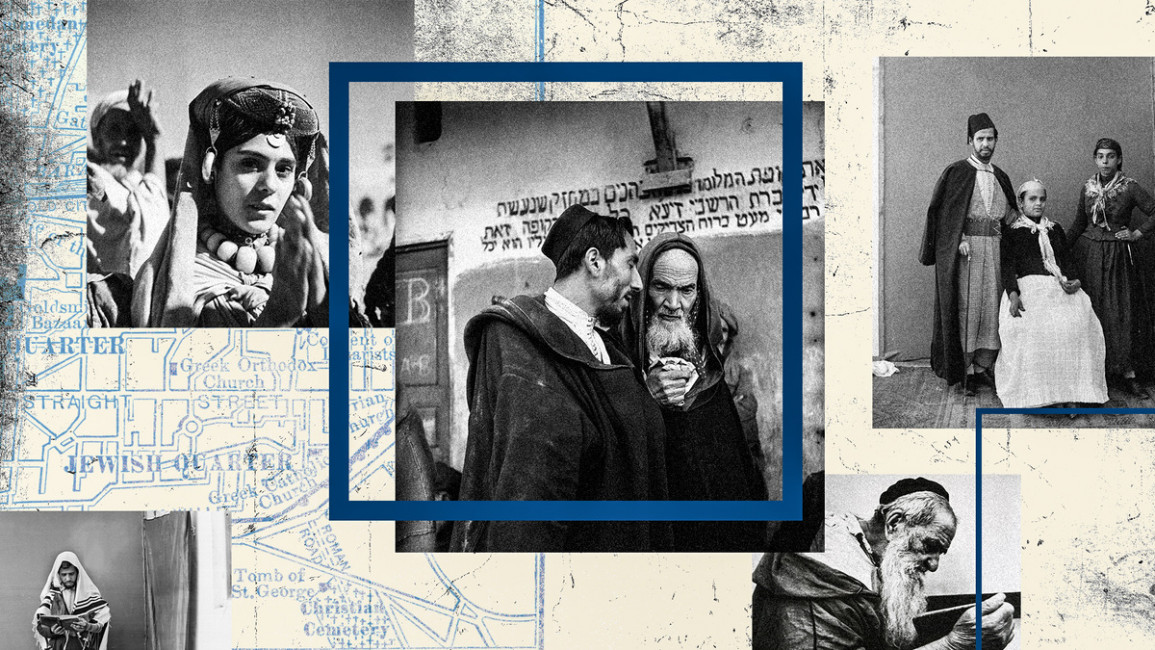
How the Syrian and Moroccan Jewish tradition of Baqashot was preserved through exile
Not before long, Jewish people were living alongside Muslim and Christian people all over the SWANA region. Living together generated cross-cultural influence and inspiration in religious traditions. Particularly, the practices of music flowed gracefully between people of the region.
One Jewish tradition that had a large influence is the practice of Baqashot, Hebrew for supplications. Baqashot is a devotional music service that takes place during the winter months from the Jewish holiday of Sukkot until Passover. On the evening of Shabbat (Friday nights), Jewish people would gather in the synagogues between midnight to dawn to sing communal prayers of devotion, known in Hebrew as Piyyutim.
People of all genders, including children, would join these communal celebrations. These groups of devotees were called either ‘Watchmen of the Morning’, ‘Awakeners of the Dawn’ or ‘Renewal each Morning’.
''There is a deep tradition of combining popular Arab melodies with Hebrew liturgical prayers. This tradition took off during the 20th century, particularly with Egyptian music. Songs by Umm Kulthum, Mohammed Abdel Wahab and Sheikh Zakaria Ahmed were brought into the synagogue space by Jewish prayer leaders.''
The best musicians, poets, singers would come together to chant and experiment in musical improvisations of maqam modulations. It was a mix between a religious concert and a prayer service. Teas, coffee and sweets would be served alongside alcoholic drinks. It is a lot like an Arab coffee house inside of a synagogue.
This practice originated in Andalusia with the rise of Kabbalah. Kabbalistic circles took place all over Spain to meditate, chant and pray together with the intention to know God more intimately.
However, in 1492, the Catholic Monarchs of Spain, Isabella and Ferdinand, issued the Alhambra Decree, also known as the Edict of Expulsion. This decree ordered the expulsion of Jewish communities from Spain and Portugal unless they convert to Christianity. Many Jewish people were forcefully converted into Christianity to stay while others fled.
European countries like England and France had also banished their Jewish communities in previous years.
The Jewish communities who fled following the decree, were welcomed by The Ottoman Empire. Places they went to included Latin America, North Africa, Turkey, Italy, Netherlands, Salonika, and all over the Levant. Syrian Jewish communities even had a practice of lighting an extra candle on Chanukah for the light of Syria taking them in as refugees. These Jews are referred to as Sephardic Jews, Sephard meaning Spain in Hebrew.
After the exile and displacement of Jewish communities from Spain, the practice of Baqashot continued mostly in Syria and Morocco.
The Moroccan and Syrian traditions differ quite a bit, each shaped by the local customs and culture of the land. The Moroccan tradition was more influenced by Andalusian elements, while the Syrian tradition resembled Arab music. Indeed until today, the differentiation in the practices of Baqashot has reflected the geographical and cultural differences between Syria and Morocco.
The Syrian tradition uses collections called Miqra Qodesh which were compiled by Rabbi Mordechai Abadi in Aleppo in 1872. It has a fixed liturgy of piyyutim, meaning that the same songs are sung each Shabbat. The foundational song for this tradition is ‘El Mistater’, translated to ‘God Is Hidden’. It is a piyyut that traces the ten Kabbalisitic Sefirot (Divine Aspects) and the unification of these aspects.
Raphael Altaras brought the Syrian tradition to Jerusalem when he travelled there from Aleppo in 1845, and Baqashot circles continue to this day.
The Moroccan collection, known as Shir Yedidot, was compiled in Marrakesh in 1921 and is a tradition that has up to 550 different piyyutim. Each shabbat, different songs are prayed, though two foundational ones remain the same: Dodi Yarad Leganno, ‘My Beloved Went to the Garden’ and Yedid Nefesh, ‘Lover of My Soul’.
Historically, Rabbi Israel ben Moses Najara was a key leader in this tradition as he wrote many piyyutim that are used in the ritual. Born in Safed in 1555, he spent his time in both Damascus and Gaza, and his family was one of the groups that were exiled from Spain in 1492. Najara composed his poems to popular Arab, Turkish and Spanish melodies. In this way, beloved songs from the local community would enter the synagogue space.
There is a deep tradition of combining popular Arab melodies with Hebrew liturgical prayers. This tradition took off during the 20th century, particularly with Egyptian music. Songs by Umm Kulthum, Mohammed Abdel Wahab and Sheikh Zakaria Ahmed were brought into the synagogue space by Jewish prayer leaders. Moshe Habusha, one of the leading Sephardic prayer leaders of our time, sings the piyyut “Tzur Ya El” to Abdel Wahab’s Bent El Balad. Another example is the piyyut “Hokhma Bina Ya El” sung to Farid Al-Atrash’s Ahbabna Ya Ein. For these singers, their cultural Arab roots and religious Jewish practice were in complete harmony.
Hadar Cohen is an Arab Jewish multimedia artist, healer and educator based in Los Angeles. She is the founder of Malchut, a mystical school teaching direct experience of God through heart centered spiritual traditions. Hadar is a Jewish mystic who works to build decolonial frameworks for worshipping God. She is an artist weaving the spiritual with the political and her artistic mediums include performance, movement, writing, weaving, sound and ritual.
Follow her on Instagram/Twitter: @hadarcohen32
Have questions or comments? Email us at: editorial-english@newarab.com
Opinions expressed in this article remain those of the author and do not necessarily represent those of The New Arab, its editorial board or staff.


![Minnesota Tim Walz is working to court Muslim voters. [Getty]](/sites/default/files/styles/image_684x385/public/2169747529.jpeg?h=a5f2f23a&itok=b63Wif2V)




